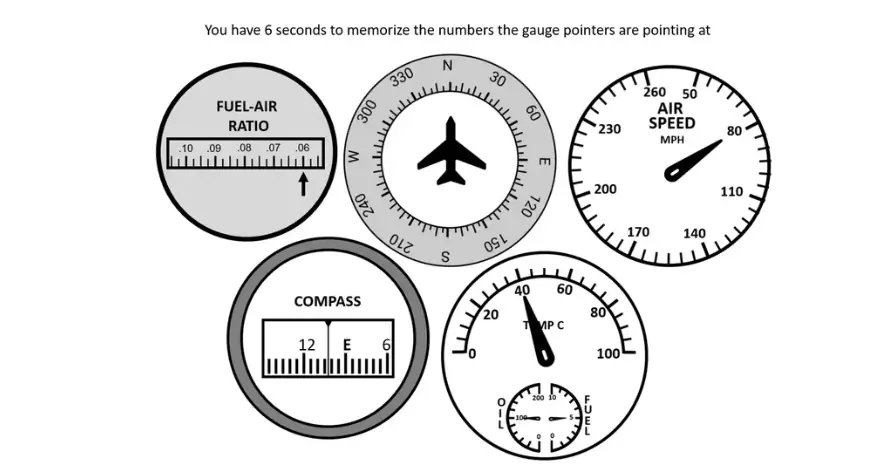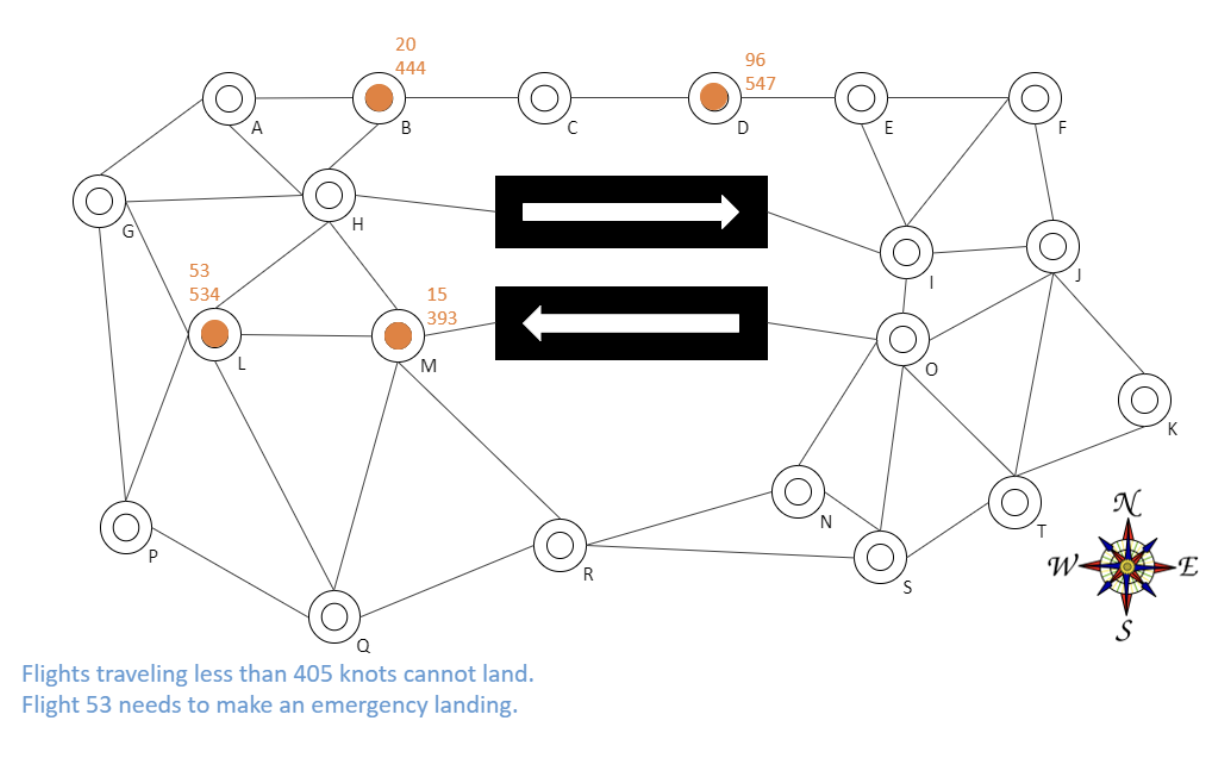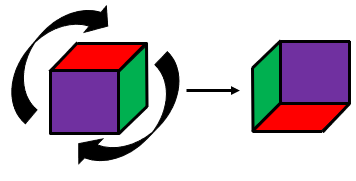 Free FEAST Test Example Questions and Explanations (2025)
Free FEAST Test Example Questions and Explanations (2025)
The FEAST Test is one of the first obstacles when applying for an Air Traffic Controller position in Canada and many other countries in Europe. It is divided into three phases of testing.
The FEAST 1 is a 2.5-hour assessment with up to 11 cognitive sections and a strict time limit, making it challenging to complete.
Our Feast Assessment Test Preparation Includes:
- 2 Full-Length Feast Simulation Tests
- 2 Number Recall Tests
- 3 Cube Folding Tests
- 2 Spatial Reasoning Tests
- 2 Gauges Memorization Tests
- 2 Correlative Orientation Tests
- 2 Conflicting Paths Tests
- 3 Speed Reaction Tests
- 5 Symbols Memorization Tests
- 1 Flight Strategy Test
- 1 Ball on the Wall Test
- 1 Follow the Dot Test
Only the top 30% of FEAST1 test-takers advance to the next phase, so thorough preparation is key to maximizing your chances of success. Curious to see what our PrepPack looks like? Watch this video!
Get Familiar with FEAST1 Examples
Practicing FEAST1 test questions in advance can save effort, help maintain focus and improve accuracy throughout the test, especially in non-intuitive questions like mentally folding a cube.
This FEAST guide is based on our FEAST1 Test Preparation Pack to give you a glimpse of what questions to expect, their challenges, and important insights and tips on what you should look out for when taking the test.
Have you been invited to take the NAV Canada online assessment? Go to our designated Nav Canada Page.
- A Diagnostics test to plan your practice
- 24 FEAST 1 practice tests
- Full-Length FEAST Simulation Test
- 3 study guides with exclusive tips
About the FEAST Eurocontrol Test Structure
The FEAST (First European Air Traffic Controller Selection Test) is a challenging screening test for Air Traffic Controller applicants, provided by Eurocontrol. Like the ATSA Test, the FEAST measures essential abilities expected of ATC candidates:
- FEAST 1 - A series of timed aptitude tests that require high attention and accuracy.
- FEAST 2- Two simulations (the DART and the Multipass Test) that assess multitasking in an ATC-related environment.
- FEAST 3- A personality questionnaire.
The number of FEAST tests you receive may change depending on your Air Navigation Service Provider (ANSP). In addition, you may be asked to complete additional tests, like the Wonderlic Assessment given by Nav Canada.
FEAST I Test Examples
The FEAST 1 is a series of 11 aptitude test sections that assess logical reasoning, attention to fine detail, memory, spatial orientation, and knowledge of the English language.
As mentioned, this test takes 2.5 hours- you will have a 10-minute break between each test session. On the real test, these short breaks will be invaluable for you, since questions can drain you out.
For example, on memorization question you'll have as little as 6 seconds to memorize complex numbers and variants:

Take a close look at the gauges above, we'll get back to this question later.
Below are FEAST Test Examples and explanations for each section of the test:
Cube Folding
Try the following sample question from the Cube Folding test, an infamous part of the FEAST that many candidates find extremely difficult:
Cube Folding Sample Question
Which of the possible options represents the cube in its folded form?


Did you spot the correct answer? On the FEAST test, you'll have 1 minute to answer each of the questions in this section.
Shortcut: Every facet of the 3d cube will never touch its opposite facet. Once you imagine the cube folded, you can eliminate answers where two opposite facets seem adjacent. More tips for solving cube questions are available in our FEAST Preparation pack.
In the FEAST test, you are directed to fold the cube so that its facets are moving away from you. This form of folding is less intuitive for most people and therefore takes some time to get used to. Practice greatly helps mentally rotate the cube in this direction and recognize its new form easily.
Conflicting Paths
Here, you will see many triangles, representing airplanes pointing in different directions. You'll then have to determine if two triangles are expected to collide or not - if two triangles point toward each other, it means that they are headed for a collision.
Conflicting Paths Sample Question
Determine whether there is a pair of triangles facing each other in a conflicting path.

Even though this may look easy, on the actual test, you will have 5-7 seconds per question. Scanning the whole screen and making a decision within that time is no easy task. Practicing these questions helps cut down the time it takes to scan and recognize whether there is a conflict.
This test measures your visual perception and ability to quickly recognize any possible conflicts ahead, an extremely important ability of Air Traffic Controllers. Note that in the actual FEAST test, the design and procedure may differ slightly.
Spatial Orientation
Spatial Orientation Sample Question
Here is a sample of a different type of question, in which you'll need to determine the location of a certain shape in relation to the presented character. The character could be placed in different orientations, so you'll have to picture the shape as the character sees it.

Gauges Memorization
Memory is one of the core cognitive abilities measured in FEAST by several sub-tests. Here, you'll be tested on your ability to remember highly detailed gauges.
Gauges Memorization Sample Question
Remember the first image on this page? Try to recall which of these images appeared in it:

On the actual test, you'll be given just a few seconds to memorize the exact gauges that appeared earlier.
TIP: The challenge in this task is remembering its details. To do that fast enough, try to repeat the numbers the pointers point at. If the pointers point at a scale mark with no number on it, look at the closest number and try to memorize it.
Symbols Memorization
A similar memory test only with distracting math questions. You will be presented with 12 symbols you have to memorize. Then, you'll be given 15 simple math questions. After determining if the answer to each math drill is true or false, you'll be asked to recall the exact symbols presented beforehand.
Number Recall
This memorization task requires remembering auditory information. Specifically, you'll be asked to listen to an audio recording with a number embedded in a sentence. You will then be asked to select the correct number that you heard in the sentence out of four possible options. Sounds easy? this number can be as high as 9,000,000.
Flight Strategy Test
Flight Strategy Questions will test your ability to organize flight paths according to the presented diagrams and given limitations. Here's an example of a flight strategy question from our full preparation pack:
Flight Strategy Test Sample Question

In what order will the flights land?
Other FEAST Test Sections
Several more test sections examine your ability to remain highly attentive, react fast, and split your attention between several tasks:
- Ball on the Wall (Multitasking)
- Reaction Speed
- Correlative Orientation
- Follow the Dot
Practice Feast Simulations to Take the Test at Your Best
Even though many candidates believe they cannot practice for ATC tests, these tests rely on processing speed, attention, and spatial abilities, which can all be easily and quickly improved using accurate practice materials. Our FEAST practice pack is customized to accurately match the FEAST test questions and time limit, to improve your ability to solve problems most efficiently and score among the top 30% to pass the test.
Navigate Through JobTestPrep's Aviation Category
FEAST II
FEAST DART Test and FEAST Multipass Test
The second test is about double in length as the first one and takes about 4 hours to complete. Round two includes two work samples: the Dynamic ATC Radar Test (DART) and the FEAST Multipass Test.
Both these tests are sophisticated and require an acute ability to multi-task; however, they require no specialized knowledge and are replete with detailed instructions to ensure that every faucet is fully clarified before beginning.
About to take the FEAST2 test? please feel free to contact us with any questions, we will be happy to help.
FEAST III
FEAST Personality Questionnaire (FPQ): This segment of the test aims to measure your personality traits and behavioral characteristics. You are presented with phrases and scenarios and need to answer them on a scale of 1-5 (agree - not agree.) The test takes about 35-40 minutes to complete.
The Last Stage- Medical Examination
The last stage is the medical exam, the only part of all FEAST tests that you cannot prepare for. The medical review is conducted according to national regulations.
If you pass all these tests, you will be well on your way to becoming an air traffic controller!
Can You Succeed in Becoming an ATC if You Fail the FEAST?
If you fail the FEAST, you'll have to wait at least two years before being able to take it again, in some countries (like Hungary) you can only take it once.
Yet, you might feel hesitant to take the FEAST test for the second time, since some argue that people who failed the FEAST are less likely to do well on the rest of the ATC training. This is completely false- many certified Air Traffic Controllers took several attempts to get in or get a license.
Keep in mind that ATCs go through a training program to get certified - A huge part of this job is the ability to learn and improve core spatial, multitasking, and other skills. The more effort you dedicate to practice, the more these skills improve, allowing you to understand and solve new situations more quickly.
So, if you want this job, you already have what it takes to get it. Just put in your best effort and practice cognitive questions that work on those skills.
Sharpen your cognitive skills with our free Cognitive Ability Practice Test!
Who Needs to Take the FEAST Test?
The test is applicable for ATC and FSS positions, among them, are several positions and specialties that encompass air traffic control, including:
NAV Canada Air Traffic Controller (ATC):
- Area Controllers (IFR) – In this position, you will use sophisticated equipment to ensure the safe flight of multiple aircraft across multiple routes. For instance, if a plane is travelling too fast or if there is not enough distance between two aircraft, it is your job to warn the pilots.
- Tower Controllers (VFR) – These guys are in charge of making sure that runways and taxiways run smoothly and that the air space in and around the airport is orderly. Depending on the airport, you may have to work in large groups, so teamwork is crucial.
- Flight Service Specialists (AAS) – These specialists are tasked with providing pilots with crucial information, including which runway to choose. Some also need to keep remote airports updated with information like emergency landings and more.
- Flight Service Specialists (FIC) – These guys are like in-flight weather forecasters, plus they help lead rescue search efforts in the event flights go off course or missing.
Looking for a different test? Check out our Civil Service Exam and get the most accurate preparation for your exam!




